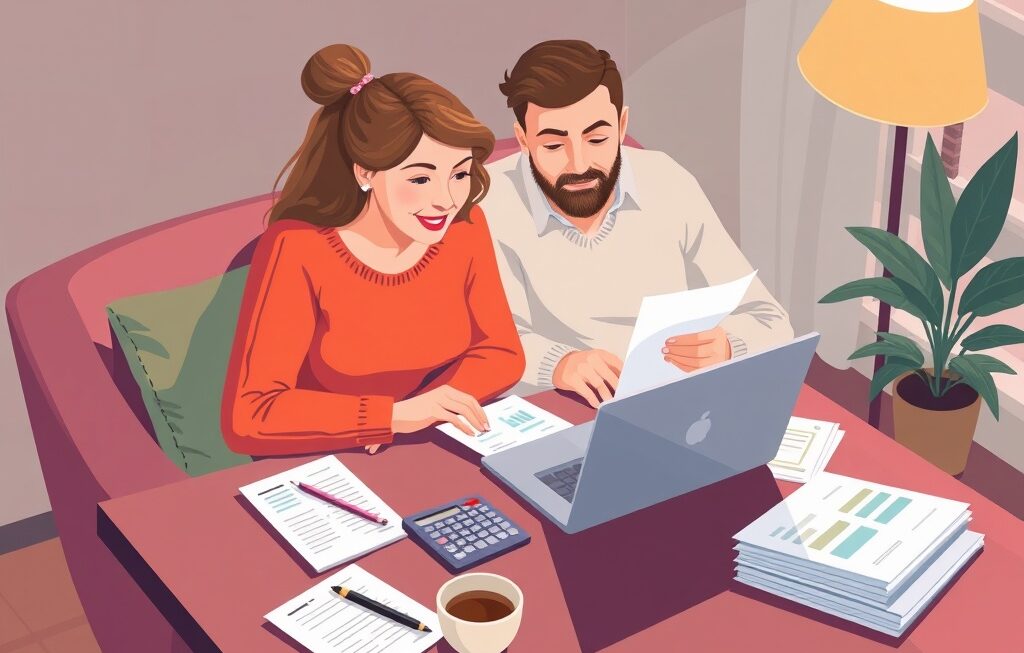Why We Buy What We Buy
Money is more than numbers on a screen or paper in a wallet — it’s an emotional force that shapes our choices, habits, and even our happiness. Understanding the psychology of spending helps explain why people often buy things they don’t need, struggle to save, or feel guilty after shopping.
This article explores the fascinating intersection between psychology and finance, uncovering why we buy what we buy and how understanding these behaviors can help us make smarter, more intentional financial decisions.
Understanding the Psychology of Spending
What Drives Our Spending Habits
At its core, spending is not just about fulfilling needs but satisfying emotions. Each purchase we make, whether big or small, reflects deeper psychological motivations. These may include:
- Comfort and security: Buying something to feel safe or stable.
- Status and recognition: Using material goods to project success or belonging.
- Excitement and novelty: Seeking stimulation or escape through new experiences.
- Control and independence: Spending as a way to assert personal freedom.
Psychologists suggest that much of our spending behavior is subconscious — shaped by upbringing, cultural norms, and personal experiences. Understanding these hidden motivations is the first step toward achieving financial control.
Emotional vs. Rational Spending
Humans like to believe they make rational decisions, but in reality, emotions often dominate. A study by Harvard Business Review found that emotional connections drive up to 95% of purchasing decisions.
For example, people might choose an expensive brand not for its objective quality but for the feelings it evokes — confidence, prestige, or belonging. Meanwhile, sales and discounts trigger excitement and fear of missing out (FOMO), often overriding logic.
The Emotional Triggers Behind Spending
Dopamine and the Reward System
Shopping releases dopamine, the brain’s “feel-good” chemical. It creates a temporary sense of pleasure and anticipation, especially when buying something new or desirable.
However, this dopamine rush fades quickly, leading some to repeat the behavior — a cycle often referred to as retail therapy. Understanding this mechanism helps explain why impulsive spending can become addictive.
Marketing and Consumer Psychology
Companies invest billions in understanding consumer behavior. Through targeted advertising, social media influence, and personalized marketing, brands create emotional connections designed to encourage spending.
Tactics include:
- Scarcity marketing: “Only 2 items left!” creates urgency.
- Anchoring: Showing an expensive product first makes the next one seem affordable.
- Social proof: Reviews, influencers, and testimonials validate decisions.
By recognizing these tactics, consumers can learn to separate genuine needs from emotional manipulation.
The Influence of Society and Culture
Spending as a Social Identity
Modern consumer culture often equates spending with self-worth. From designer clothing to luxury cars, purchases become symbols of identity, success, and belonging.
This phenomenon, known as conspicuous consumption, was coined by sociologist Thorstein Veblen in the late 19th century and remains highly relevant today. Social media platforms like Instagram and TikTok amplify it by showcasing curated lifestyles that encourage comparison.
Peer Pressure and Lifestyle Inflation
As income grows, so do expenses — a trap called lifestyle inflation. People feel compelled to match the spending habits of peers, even if it undermines long-term goals.
The key to breaking free lies in self-awareness and defining personal values. Financial wellness is achieved not by following trends but by aligning money with meaning.
Behavioral Biases That Influence Spending
Behavioral economics has identified several cognitive biases that shape financial decisions. Recognizing them helps individuals counteract impulsive or irrational behavior.
1. Anchoring Bias
We tend to rely heavily on the first piece of information we receive. For example, if a product was originally $200 and is now $120, it feels like a bargain — even if $120 is still overpriced.
2. Loss Aversion
People fear losses more than they value equivalent gains. This explains why we struggle to cancel subscriptions or sell poorly performing assets — we hate admitting “loss.”
3. Availability Heuristic
Consumers overestimate the value of recent or memorable events. Seeing friends travel abroad may trigger the urge to book a trip, even when finances don’t allow it.
4. The Halo Effect
Attractive packaging or branding makes us assume a product is superior. This bias drives premium purchases and brand loyalty.
How Technology Shapes Modern Spending
The Digital Temptation
The rise of e-commerce, one-click payments, and social media shopping has revolutionized consumer behavior — and not always for the better.
Instant gratification has become the norm. Algorithms analyze preferences, sending personalized ads that appeal to emotional triggers. Notifications, discounts, and “limited-time offers” make resisting harder than ever.
Subscription Economy
From streaming platforms to meal kits, the subscription model turns recurring expenses into invisible drains on budgets. While convenient, they often promote passive overspending.
Regularly auditing subscriptions and asking, “Do I still use this?” helps regain control.
Strategies to Build Healthier Spending Habits
1. Practice Mindful Spending
Before each purchase, pause and ask:
- Do I need this, or do I want it?
- How will this make me feel tomorrow?
- Does this align with my goals?
Mindfulness breaks the automatic spending cycle and replaces impulse with intention.
2. Set Emotional Boundaries
Recognize emotional triggers — boredom, stress, loneliness — and address them without spending. Replace retail therapy with healthier habits like exercise, journaling, or connecting with friends.
3. Use the 24-Hour Rule
When tempted by a non-essential purchase, wait 24 hours. Most impulsive urges fade with time, leading to more rational decisions.
4. Budget with Purpose
Budgeting shouldn’t feel restrictive. It’s a tool for freedom. The 50/30/20 rule remains one of the simplest frameworks:
- 50% for needs
- 30% for wants
- 20% for savings and debt repayment
Using apps like YNAB or Goodbudget can automate this process and provide valuable insights.
5. Redefine Success
Challenge the idea that success equals material accumulation. Instead, view financial health, time freedom, and personal growth as real markers of wealth.
The Link Between Money and Mental Health
Spending as Emotional Regulation
People often use spending to regulate mood. Small purchases can provide temporary relief, but when emotional spending becomes chronic, it may lead to financial stress and guilt.
Therapists increasingly incorporate financial awareness into mental health treatment, helping individuals identify emotional triggers tied to money.
Building Financial Self-Awareness
Self-awareness transforms spending patterns. Journaling, therapy, or simply reviewing expenses weekly helps uncover hidden motives and emotional drivers.
A healthy relationship with money mirrors self-acceptance — it’s about intentionality, not deprivation.
The Future of Conscious Spending
Sustainable and Ethical Consumerism
A growing number of consumers now prioritize sustainable spending — buying from brands that align with environmental and social values. Conscious consumers ask, “Where did this come from?” and “Who benefits from my purchase?”
Minimalism and Intentional Living
The minimalist movement emphasizes owning less to live more meaningfully. By focusing on experiences rather than possessions, individuals report higher satisfaction and less financial stress.
AI and Personalized Financial Tools
Artificial intelligence will continue transforming personal finance. AI-driven tools already analyze spending habits, categorize emotional purchases, and offer customized saving strategies — promoting greater awareness and accountability.

In Summary:
Understanding the psychology of spending empowers people to make decisions rooted in purpose rather than impulse. Every financial choice is emotional — but emotions can be guided, not suppressed.
By practicing mindful spending, embracing emotional awareness, and aligning money with personal values, individuals can achieve both financial stability and emotional freedom.
Ultimately, money is not the enemy — it’s a mirror reflecting who we are, what we value, and what we aspire to become. The key lies in learning to look at it honestly, without fear or judgment.



